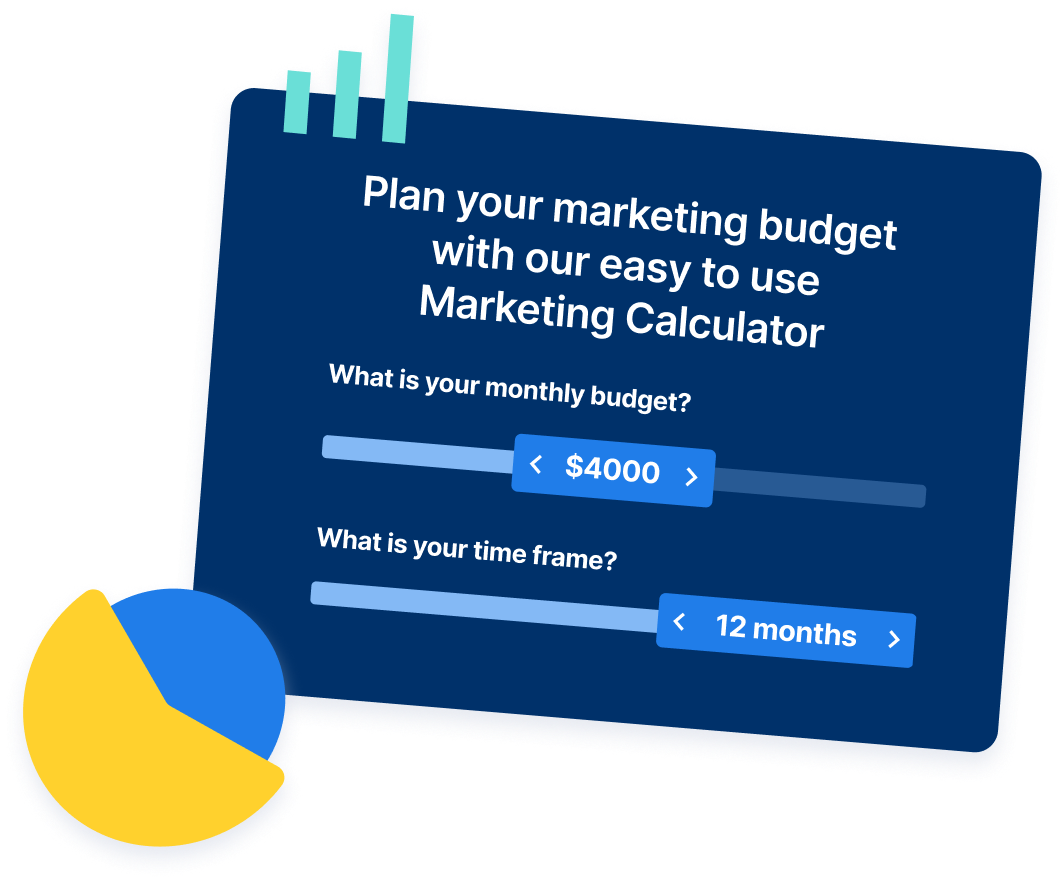-
 Published: Jun 11, 2025
Published: Jun 11, 2025
-
 9 min. read
9 min. read
-
Summarize in ChatGPT
-
 Sarah Berry
Sarah Berry Lead Web Marketing Consultant
Lead Web Marketing Consultant
- Sarah Berry is a Lead Web Marketing Consultant at one of the largest digital marketing agencies in the USA — WebFX. With more than 10,000 hours of experience, she offers practical insights and strategies to grow your digital revenue. Her work has been cited by Michigan State University, Business Insider, and Ars Technica. When she isn’t polishing her Time Magazine Person of the Year Award, she’s spending time with her flock of ducks.
“The only sustainable competitive advantage is to learn faster than your competition.” That quote (from former GE CEO Jack Welch) rings true now more than ever.
With large language models (LLMs) like ChatGPT and Gemini redefining the search experience, it’s become imperative for businesses to adapt and adopt LLM SEO.
Getting that competitive advantage, though, starts with understanding LLM SEO.
What is LLM SEO?
LLM SEO is the practice of optimizing a brand’s online presence in order to appear in large language model responses, whether via a mention or citation. It stands for search everywhere optimization for large language models.
There are a few other names for LLM SEO, including:
- Generative engine optimization (GEO)
- Answer engine optimization (AEO)
- Large language model optimization (LLMO)
Why does SEO for large language models matter now?
With a 14% annual growth rate, the AI search market is growing rapidly.
Analysts now value the market at more than $40 billion — and expect it to reach $100+ billion by 2032. Google’s AI Overviews and AI Mode have only accelerated this valuation (and growth), creating an urgent need for sophisticated AI visibility tools that can track brand performance across this expanding ecosystem.
LLM SEO matters because people are no longer reliant on traditional search — ChatGPT, Gemini, and other AI models are helping them discover brands, solve problems, and purchase products.
Just as important is how users have adopted LLM-powered search:
- 80% of users rely on AI-powered summaries 40% of the time
- 68% of users use LLMs to research and summarize information
- 58% of users now use LLMs for product and service recommendations
For businesses, these shifts translate to a 15 – 25% decrease in organic traffic. Companies like NerdWallet and HubSpot have seen these traffic decreases play out publicly, with NerdWallet reporting a 20% year-over-year traffic loss in 2024.
While companies can focus on regaining that lost traffic, it’s an incomplete approach because it overlooks AI’s growing role in how people discover brands, research solutions, and purchase products.
Instead, businesses need to expand their thinking to how they’ll meet users in traditional and AI-powered experiences on ChatGPT, Google, and Perplexity — and that starts with LLM SEO.
How does LLM SEO compare to traditional SEO?
LLM is not the end of traditional SEO. In fact, traditional SEO is considered foundational to LLM optimization. That’s why SEO-optimized websites appear more often in AI-powered experiences.
You can see how the two overlap (and differ) below:
| Area | Traditional SEO | LLM SEO |
| Crawling | ✓ | ✓ |
| Indexing | ✓ | ✓ |
| Backlinks | ✓ | Emphasis on brand mentions and sentiment |
| Keywords | ✓ | Emphasis is on conversational queries |
| Content | ✓ | ✓ |
| UX | ✓ | Emphasis on content structure |
The core difference between the two is their targeted search experience. While SEO targets traditional search experiences, LLM SEO targets large language model search experiences.
How to do LLM SEO
You know optimizing for LLMs matters. Now, learn how to do LLM SEO for your business — based on our first-hand experience from managing hundreds of LLM SEO campaigns:
Nurture traditional SEO efforts
First, continue to nurture traditional SEO efforts by:
- Allowing search (and AI) crawlers to crawl and index your website
- Producing keyword-targeted SEO content (organic is still a leading traffic source)
- Claiming local listings, like Google Business Profile and Bing Places
- Optimizing existing content, from product pages to blog posts, for traditional search
- Improving page speed to streamline the user experience
- Outreaching publishers to earn links to your website’s content
See Related: How to Do SEO Yourself
Produce original content
Original content is one of the most powerful optimizations available to businesses looking to appear in LLM responses. That’s because LLMs (like Google) love content that brings something new to the conversation using:
- Statistics
- Quotes
- Insights
Businesses can lean into this optimization by:
- Evaluating third-party studies
- Running data studies
- Analyzing internal data
- Interviewing senior leaders or front-line workers
Get ideas for how this could look at your organization below:
| Tactic | Example |
| Evaluating third-party studies | A cybersecurity firm analyzes 15 recent breach reports to identify which vulnerabilities affect their target audience (small businesses) the most |
| Running data studies | A recruitment platform analyzes 10,000 job applications to determine which resume keywords correlate with interview callback rates |
| Analyzing internal data | A manufacturing company analyzes five years of production data to identify seasonal patterns for equipment downtime |
| Interviewing senior leaders or front-line workers | A consulting firm interviews 20 Fortune 500 CTOs to determine where CTOs are investing in the upcoming year |
Optimize content for clarity
When it comes to SEO for LLMs, it’s not just writing content that brings something new to the conversation. It’s also about formatting that content so it’s concise for users and digestible for LLMs.
For example, content should use the following:
- Headings (H1, H2s, H3s, etc.)
- Lists
- Tables
- Schema markup
You can use headings, for example, to write concise answers to questions like:
- What are the best pillows for neck pain?
- What are the main benefits of remote work for businesses?
- How often should you replace your windshield wipers?
Businesses should also evaluate their content’s readability. In most cases, it’s worth writing at an eighth-grade reading level, though this can vary for more niche industries.
Discover: Your Content’s Readability Score
Enhance content with visuals
Visuals are an underused optimization for appearing in LLM responses, like in AI Overviews or ChatGPT. With visuals, whether it’s a graphic or interactive experience, businesses can build their visibility and even referral traffic.
Examples of how organizations can use visuals for LLM SEO include:
| Visual | Example |
| Infographic | An infographic on emergency preparedness across households and the different supplies |
| Graph | A bar chart showing how much it costs to heat a home based on the fuel type, like gas, electric, and oil |
| Diagram | A flowchart showing the mortgage approval process for first-time homeowners |
| Before / After | A before / after visual for braces |
| Interactive | A calculator for estimating potential savings from switching to LED lights (based on home size) |
Build brand mentions
Brand mentions are one of the most important LLM SEO optimizations.
That’s because — like traditional SEO, where ranking on page two means next-to-nothing traffic — not being mentioned in LLMs means you’re not a part of the conversation.
There are a few elements to brand mentions, including:
| Element | Considerations | Example |
| Who | Who mentioned your brand? Was it a trusted publisher relevant to your industry? | A financial planning firm’s study gets mentioned in a Wall Street Journal article on retirement strategies |
| Where | Where was your brand mentioned? Was it a forum response, best-of roundup, or something else? | A project management software gets listed in a “Top 10 Project Management Tools” article |
| How | How was your brand mentioned? Was it positive or negative? Did it relate to what you do? | A mattress company gets recommended in a Reddit thread on the best mattresses for side sleepers |
You’ll notice these elements all relate to context — which is vital to LLMs. Understanding your brand’s nuances, like whether it’s a good mattress for side sleepers, helps LLMs deliver personalized responses.
Even more important, these nuances help you reach your target audience.
Creating these mentions overlaps with traditional SEO, which uses off-page SEO to build a brand’s online reputation and backlink profile, which helps the site rank in search results.
For example, businesses can consider the following optimizations:
| Optimization | Example |
| Getting listed on review sites | A home services company creates profiles on Angi, HomeAdvisor, and Yelp |
| Generating online reviews | A restaurant offers diners a free appetizer on their next visit if they leave a review on Yelp |
| Outreaching publishers | A manufacturing company partners with a trade publication to produce an industry report on supply chain delays |
| Participating in online communities | A landscape architect shares plant recommendations in gardening Facebook groups and home improvement subreddits |
| Encouraging user-generated content | A furniture store gifts a pet-sized couch for couch purchases that customers often share on social media |
| Resolving poor customer experiences | A SaaS company responds to 1-2 star reviews and messages them privately to resolve the issue |
How to measure LLM SEO results
When it comes to measuring LLM SEO results, there are three factors:
- Metrics
- Tools
- Timeframe
You can learn more about these factors below:
| Metric | Measuring Tool | Results Timeframe |
| Referral traffic | Google Analytics 4 | 30 – 90 days |
| Mentions | OmniSEO® | 30 – 90 days |
| Citations | OmniSEO® | 30 – 90 days |
| Share of voice (or the % of brand mentions and citations across the web) | OmniSEO® | 30 – 90 days |
| Share of model (or the % of brand mentions and citations in a specific model) | OmniSEO® | 30 – 90 days |
| Share of search (or the % of brand-specific searches) | OmniSEO® | 30 – 90 days |
Metrics
LLM SEO focuses mostly on visibility metrics, like:
- Referral traffic, or the number of visits from LLMs
- Mentions, or when an LLM mentions your brand
- Citations, or when an LLM links to your brand’s website
- Share of voice, or the percentage of brand mentions across models vs. a competitor’s
- Share of model, or the percentage of brand mentions within a model vs. a competitor’s
- Share of search, or the percentage of brand searches vs. a competitor’s
These metrics introduce a significant shift for traditional SEOs, which often focus on rankings and traffic. However, they demonstrate what companies like NerdWallet and HubSpot are seeing — traffic is down, but revenue is up.
Tools
Tools are key — but limited — when it comes to tracking LLM performance.
Google Analytics 4
In Google Analytics 4, the best way to measure LLM traffic is through a custom channel group. With a custom channel group based on source, businesses can extract LLM visits from referral traffic to measure LLM performance at a glance.
Use regex — based on source — to create this custom channel group. An LLM (like ChatGPT) can help create the regex, which will change as new LLM platforms get released.
You can access some example regex below:
^(chat\.openai\.com|chatgpt\.com|openai\.com|perplexity\.ai|gemini\.google\.com|copilot\.microsoft\.com|you\.com|poe\.com)$
OmniSEO®
OmniSEO® is one of the few solutions available that tracks all LLM SEO metrics. While paid, the AI search tracking platform provides a single place for measuring a business’s visibility across several experiences, including:
- ChatGPT
- AI Overviews
- Perplexity
- Claude
- Meta AI
- Copilot
- xAI
- Apple Intelligence
- And more
Companies can also benchmark their performance against competitors.
You can also use the OmniSEO® platform (which was named the Best SEO Innovation of the Year) to measure how LLMs perceive your brand’s:
- Cost
- Expertise
- Performance
- Product and/or service
- Reputation
- And more
As a result, you get a complete picture of your brand’s performance.
Examples of real LLM SEO campaigns
Some examples of real LLM SEO campaigns (from our portfolio) include:
| Industry | Optimizations | Result |
| SaaS |
|
|
| Utilities |
|
|
| Professional services |
|
|
Get discovered in LLMs with OmniSEO®
Ready to learn faster than the competition?
Get the competitive edge with WebFX, the award-winning digital marketing agency that’s helped businesses across industries succeed at LLM SEO with our AI search optimization services and OmniSEO® technology.
Contact us online today to see what’s possible!
-
 Sarah Berry is a Lead Web Marketing Consultant at one of the largest digital marketing agencies in the USA — WebFX. With more than 10,000 hours of experience, she offers practical insights and strategies to grow your digital revenue. Her work has been cited by Michigan State University, Business Insider, and Ars Technica. When she isn’t polishing her Time Magazine Person of the Year Award, she’s spending time with her flock of ducks.
Sarah Berry is a Lead Web Marketing Consultant at one of the largest digital marketing agencies in the USA — WebFX. With more than 10,000 hours of experience, she offers practical insights and strategies to grow your digital revenue. Her work has been cited by Michigan State University, Business Insider, and Ars Technica. When she isn’t polishing her Time Magazine Person of the Year Award, she’s spending time with her flock of ducks. -

WebFX is a full-service marketing agency with 1,100+ client reviews and a 4.9-star rating on Clutch! Find out how our expert team and revenue-accelerating tech can drive results for you! Learn more
Try our free Marketing Calculator
Craft a tailored online marketing strategy! Utilize our free Internet marketing calculator for a custom plan based on your location, reach, timeframe, and budget.
Plan Your Marketing Budget

SEO Success with KOA

Proven Marketing Strategies
Try our free Marketing Calculator
Craft a tailored online marketing strategy! Utilize our free Internet marketing calculator for a custom plan based on your location, reach, timeframe, and budget.
Plan Your Marketing Budget




